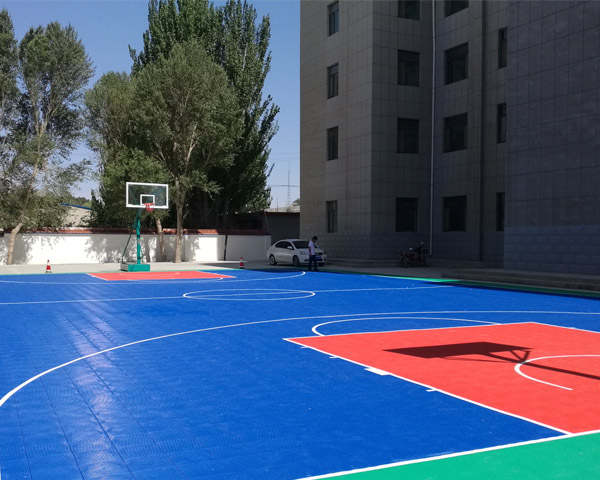снеж . 04, 2024 10:49 Back to list
Ensuring Safe and Fun Play Areas for Children on Playground Floors
Playground Safety The Importance of Safety Floors
Playgrounds are essential spaces for children's development, fostering physical activity, social interaction, and creativity. However, while the primary focus is often on the equipment itself, the surfaces beneath and around those play structures are equally crucial. Playground safety floors are designed to reduce injuries associated with falls, ensuring that children can explore and enjoy playtime with minimal risk. In this article, we will delve into the importance of playground safety floors, the various materials available, and best practices for maintaining these essential surfaces.
Importance of Playground Safety Floors
Falls are one of the leading causes of injuries among children on playgrounds. According to the Centers for Disease Control and Prevention (CDC), nearly 200,000 children visit emergency rooms each year due to playground-related injuries. Many of these injuries stem from falls onto hard surfaces, making the choice of playground surfacing a significant factor in enhancing child safety. Safety floors provide cushioning, reducing the impact of a fall and significantly lowering the likelihood of serious injuries, such as fractures, concussions, and abrasions.
In addition to cushioning, safety floors can also play a pivotal role in preventing slips and falls during play. Wet or uneven surfaces can contribute to accidents, particularly on traditional grass or dirt surfaces. By providing a level, non-slip surface, playground safety floors promote safer play conditions for children of all ages and abilities.
Materials for Playground Safety Floors
There are several types of materials used in playground safety flooring, each with its unique features, benefits, and drawbacks
. The most common materials include1. Rubber Matting Made from recycled rubber, this option offers excellent shock absorption and is very durable. Rubber mats can withstand the elements and heavy foot traffic, making them ideal for high-use areas. They are also available in various thicknesses to accommodate different equipment heights.
2. Poured-In-Place Rubber This seamless rubber surface is created by mixing rubber granules with polyurethane and pouring them into place. Poured-in-place surfaces provide excellent cushioning, can be customized in terms of color and design, and require minimal maintenance. However, installation can be costly.
3. Wood Chips or Mulch A natural surfacing option, wood chips and mulch are commonly used for their affordability and ease of installation. While they provide moderate shock absorption, they can become displaced over time and require regular replenishment to maintain their effectiveness.
playground safety floor

4. Artificial Turf Synthetic grass can provide an aesthetic playground surface, but it often requires a rubber underlayer to ensure adequate shock absorption. While easy to clean and maintain, the heat retention of artificial turf can become an issue in hot weather.
5. Sand Sand is another natural option that provides good cushioning. However, it requires regular maintenance to keep it level and clean, and there is always a concern about sand getting displaced or used as a projectile by energetic young children.
Best Practices for Playground Safety Flooring
To ensure playground safety floors remain effective, it is essential to adhere to some best practices
- Regular Inspections Conduct routine checks for wear and tear, displacement, or compaction of the safety flooring. Promptly address any issues to maintain optimal shock absorption and safety levels.
- Adequate Depth Ensure that the depth of loose-fill materials, such as wood chips or sand, adheres to safety guidelines based on the height of the play equipment. The recommended depths can vary based on material type and equipment height.
- Cleanliness Keeping the playground area tidy is crucial. Remove debris, litter, or anything that could pose a safety hazard. Regularly check for harmful items and clean up spills that could create slippery conditions.
- Educating Caregivers Teach parents and caregivers about the importance of proper use and supervision of playground equipment. Ensuring children play safely helps prevent accidents before they occur.
Conclusion
Creating a safe playground environment involves more than just selecting the right equipment; it includes careful consideration of the surfacing beneath it. Playground safety floors help minimize injuries from falls, create a comfortable environment for play, and enhance the overall experience for children. As communities work to ensure safe play spaces, prioritizing the installation and maintenance of effective safety flooring will contribute to a healthier, happier, and more active generation.
-
Wood Sports Flooring Enhanced by GPT-4-Turbo | Top Performance
NewsAug.02,2025
-
Sport Court Tiles with AI Innovation | Durable & Safe
NewsAug.01,2025
-
Vinyl Carpet Flooring | Durable & Waterproof Design
NewsJul.31,2025
-
Premium Basketball Board Stand with GPT-4-Turbo AI
NewsJul.31,2025
-
Premium Maple Flooring for Gyms & Homes | PVC & Vinyl Options
NewsJul.30,2025
-
Premium Outdoor Basketball Court Tiles for All Weather Use
NewsJul.30,2025

